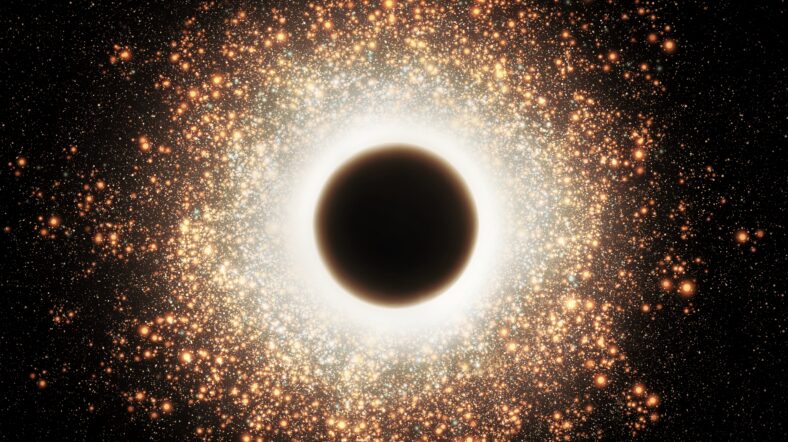Ultralight Dark Matter Might Be Able To Explain The Formation Of Supermassive Black Holes In The Early Universe

Black holes have always been the divas of the cosmos. They are some of the most powerful and mysterious objects in the universe, leaving scientists with plenty of questions about their functions. Scientists have been scratching their heads over how some black holes formed way earlier than expected.
In a black hole, the gravity is so strong that nothing can escape, not even light. There are two main types of black holes—stellar mass and supermassive black holes. Their size, formation, and impact on their host galaxy vary.
Stellar mass black holes form from collapsing massive stars and range from a few to dozens of times the mass of the sun.
Meanwhile, supermassive black holes grow from accretion and mergers and are located in the center of galaxies. They are millions to billions of times more massive.
It is unclear exactly what the origin of a supermassive black hole is, especially those that are over a billion solar masses and at high redshifts.
They are very far away from Earth, yet they came into existence during some of the earliest years of the universe.
One major process that leads to their formation is the direct collapse of cooling atomic gas clouds without becoming stars.
This process is thought to be able to create a massive “seed” black hole around 100,000 solar masses that can grow to a billion solar masses.
A team of researchers from Cornell University are investigating a process that may explain the existence of supermassive black holes at such high redshifts.

Sign up for Chip Chick’s newsletter and get stories like this delivered to your inbox.
Their theory is that the flow of ultraviolet radiation can dissociate hydrogen molecules, preventing the cloud from breaking apart and enabling its collapse.
According to their hypothesis, the ultraviolet radiation produces the right conditions for the formation of supermassive black holes in the early universe.
They assume that dark matter is made up of axions, ultra-light wave-like particles, that interact with electromagnetism.
Axion field oscillations in dark matter halos can amplify infrared photons when the axion field transfers energy to the photons, which is called parametric resonance.
It can lead to the emission of ultraviolet radiation once the thermal energy reaches equilibrium or the halos or through a strong photon cascade.
The study shows that ultralight dark matter (axions) can generate enough ultraviolet photons for the direct collapse of black holes.
This process of parametric resonance allows for black hole formation during the earliest years of the universe.
Although scientists are still working out all the details, it could explain the existence of supermassive black holes at high redshifts.
Several modern theories, such as the standard cosmological model and string theory, align with the hypothesis. The details of the paper were published to the preprint server arXiv.
More About:News





